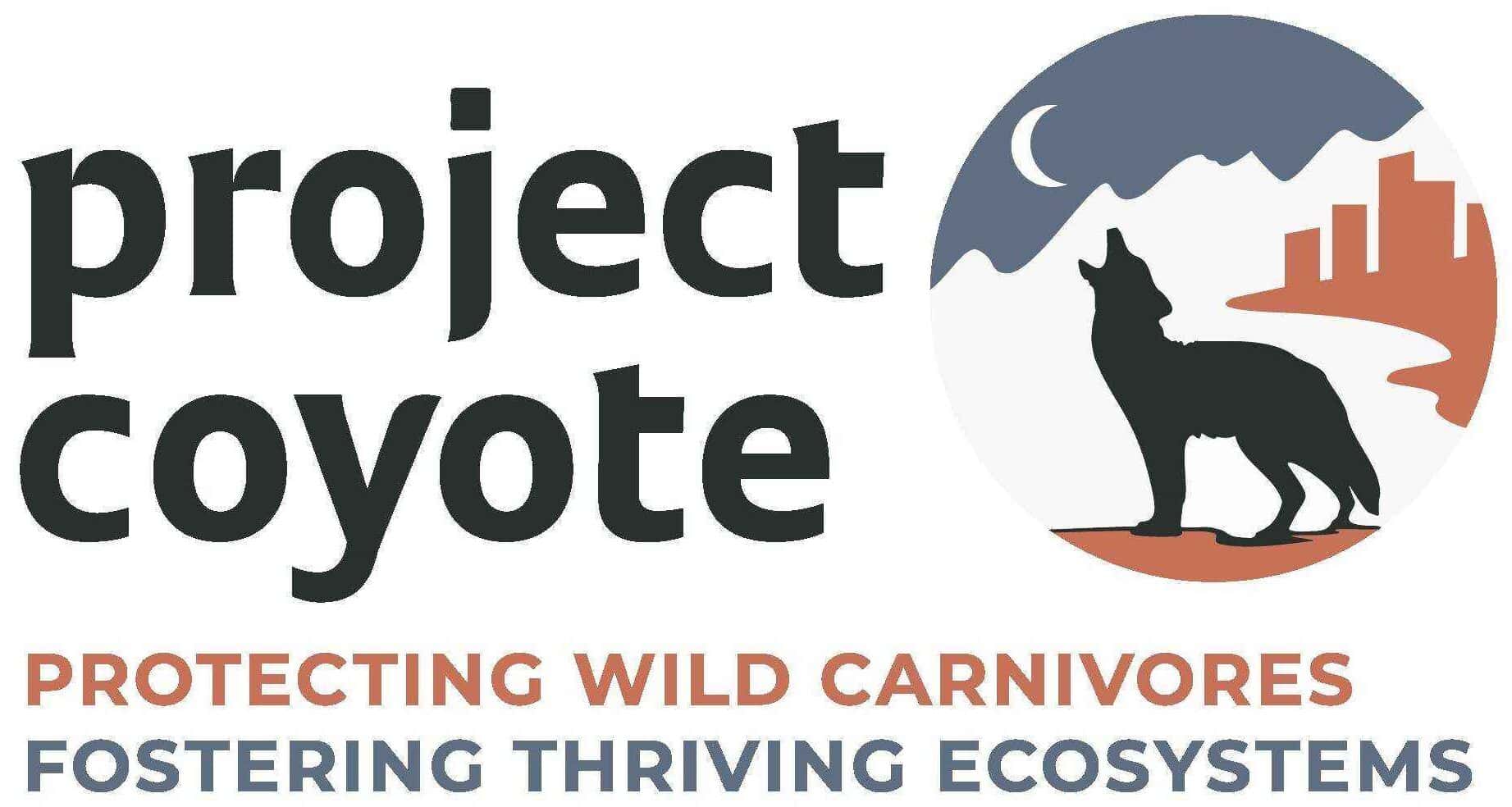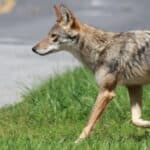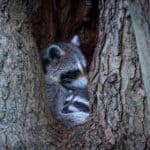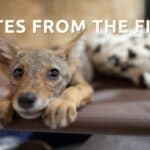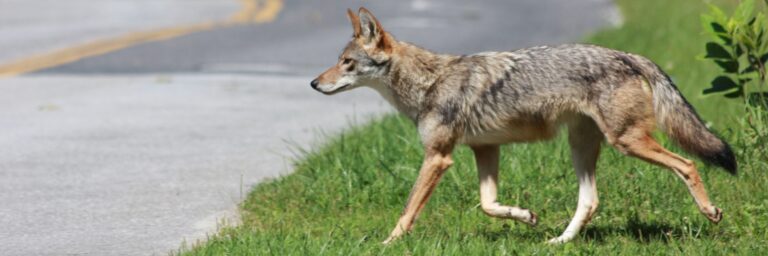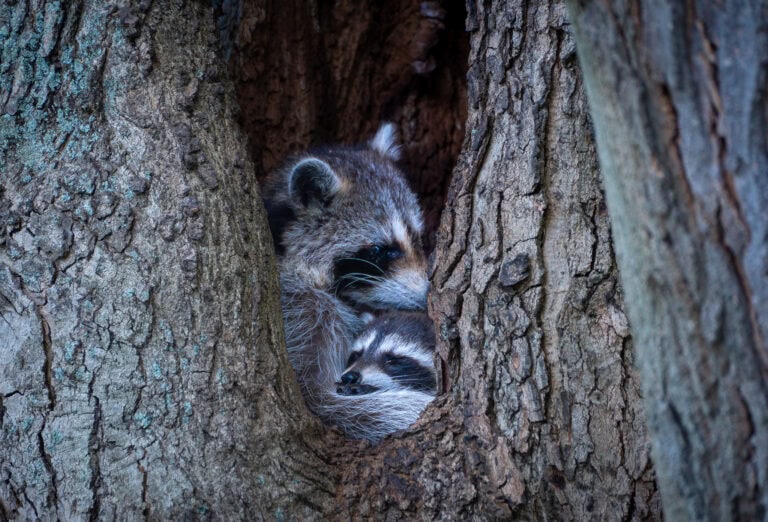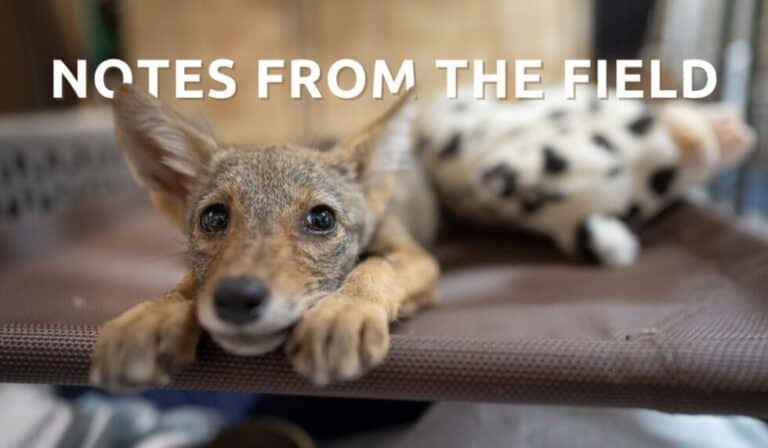I first encountered the work of Dr. Scott Henke while pursuing my graduate degree in wildlife ecology, policy and conservation at Prescott College in Arizona. My then graduate school advisor, Dave Parsons (a founding member of Project Coyote’s Science and Ethics Advisory Board) recommended Dr. Henke’s work focused on human-wildlife conflicts—which was the focus of my master’s thesis.

Seventeen years later, I had the pleasure of meeting Dr. Henke in person during a recent trip to Corpus Christi, Texas. I was there to speak on a panel about the ecological importance and intrinsic value of terrestrial and marine predators—as well as our ethical obligations to protect them from harm—alongside other Project Coyote staff and our esteemed Ambassador Dr. Sylvia Earle.
It was a delight to meet Dr. Henke and some of his graduate school students at the Caesar Kleberg Wildlife Research Institute at Texas A&M University – Kingsville, where they are doing important work on imperiled species and the impacts of zoonotic diseases.
Dr. Henke’s work has informed many of Project Coyote’s science-based resources, and has helped dispel many of the misconceptions around coyote ecology and behavior. I hope you enjoy this insight into his life and career as part of Project Coyote’s Science & Ethics Program.
-Camilla Fox, Founder and Executive Director of Project Coyote
Camilla: Can you share a bit about your background with regard to wildlife research and applied conservation? What drew you to this work?
Scott: I grew up in a small town in the Midwest, surrounded by family farms and forested areas. As a teenager, I watched the forests being cut, farms sold, and rural lands converted into shopping malls, medical complexes, and car lots. It made me sad to watch my boyhood haunts be devastated. Also, my favorite TV show was an early wildlife management show called Wild Kingdom, hosted by Marlin Perkins. It showed weekly escapades of biologists assisting wild animals in the name of conservation. I knew then that working with wildlife in conservation management was what I wanted to do as a career.
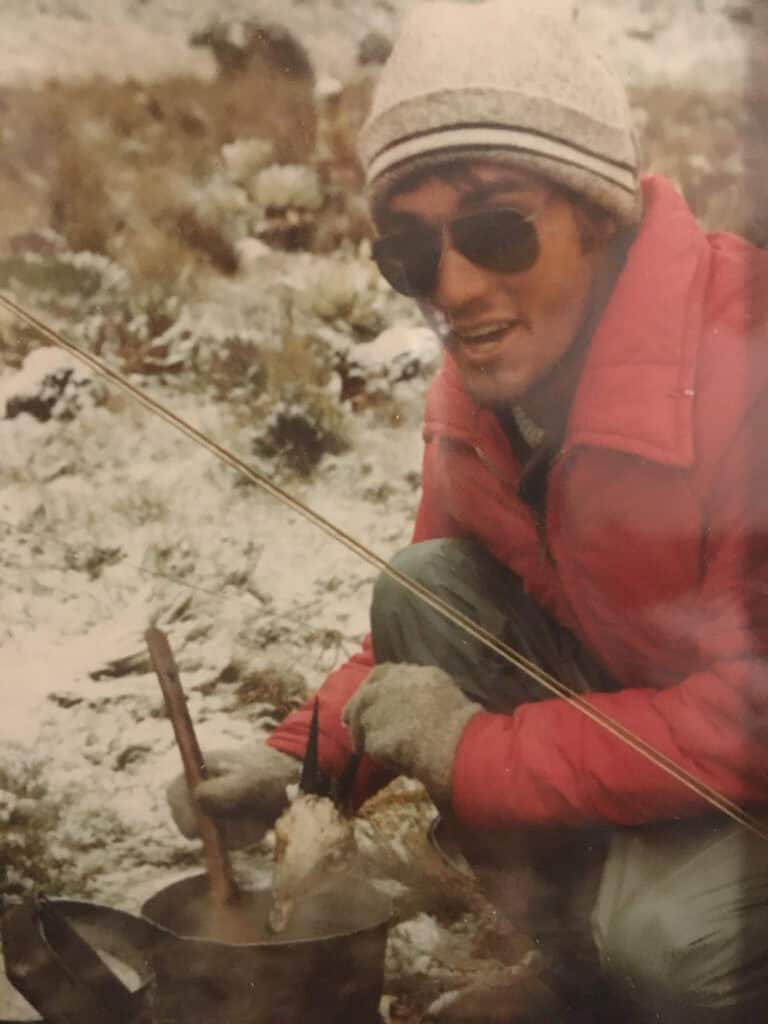
I attended Purdue University for my B.S. degree in Ecology, Evolution, and Population Biology, then pursued a MS degree and PhD degree in Wildlife Sciences, both at Texas Tech University. My dissertation investigated coyote removal on short-grass ecosystems. After graduating with my PhD, I joined the faculty at the Caesar Kleberg Wildlife Research Institute at Texas A&M University-Kingsville, where I have been since 1992.
I have conducted wildlife work on all continents, except Antarctica (I need to figure out a study I can do on penguins so I can go there also). Most of my work focuses on human-wildlife conflicts, with an emphasis on zoonotic diseases.
Camilla: Regarding your coyote-related studies, what are some of the broader implications of your findings regarding coyotes’ role in promoting biological diversity and maintaining overall ecological health?
Scott: I investigated how a short-grass prairie in western Texas responded to the intensive removal of its primary predator species: the coyote. What I found was surprising. When intensive coyote removal was sustained for at least a year, biodiversity in the area actually decreased—contrary to expectations. The rodent community of that area, which naturally comprises about a dozen species, collapsed due to an eruption of kangaroo rats that occurred with coyote removal. Kangaroo rats dominated the landscape in the absence of coyotes, pushing out other rodent species, and triggering changes in the vegetational community. Jackrabbit populations also tripled with coyote removal, which created greater competition with cattle for available forage. Thus, livestock stocking rates needed to be decreased to be kept in line with available vegetation, which meant less financial return for ranchers. Meanwhile, mesopredators, such as skunks and gray foxes, moved into the area as coyote numbers declined, leading to higher predation rates on ground-nesting birds (i.e., scaled quail). Perhaps the most surprising, the number of calves lost (i.e., either killed or were stillborn and then consumed) did not change despite intensive coyote removal.
In a nutshell, coyote removal is conducted to help ranchers financially by avoiding livestock losses. However, in reality, by conducting coyote removal, it cost ranchers more money (in reduction of stocking rates and loss of vegetation) than it gained (in reduction of predated calves). Thus, financially, coyote removal created more problems for ranchers than it solved.
Camilla: Regarding predation, what are some of the primary misconceptions about coyotes and livestock ranching?
Scott: Coyotes are portrayed as the major predator of sheep, goats, and cattle in the United States. This perception may stem from the early days when wolves were on the landscape. People have an inherent fear of wolves. Hence, all the children’s stories about the big, bad wolves like The Three Little Pigs, Little Red Riding Hood, The Boy Who Cried Wolf. Wolves are a much larger canid and roam as packs. They are known to kill larger prey than coyotes (i.e., cattle, elk, moose). Today, wolves no longer inhabit much of the U.S., but coyotes—though significantly smaller—bear a resemblance to wolves. It seems that, in many places, the fear once directed at wolves has shifted to coyotes. However, coyotes generally don’t spend energy pursuing large prey like livestock. Instead, they tend to select easier, more accessible food sources, including carrion, fruit, insects, and small mammals like rodents and rabbits.
A study by Meinzer et al. (1975) evaluated the diet of coyotes in the Rolling Plains of Texas and found that native fruits were a major dietary item of coyotes. Meinzer et al. (1975) hypothesized that coyote predation on cattle might only be problematic when coyote densities were high and native fruit production (i.e., major dietary item) was low. In my own research, I found that if one conducts a food habits analysis of coyote stomachs and scats, yes, cattle will be found in the samples, but it occurs as carrion and not as live-killed cattle. Coyotes are scavengers and provide an important ecosystem service by foraging on dead animals. I believe that the presence of livestock in coyote diets has been widely over-estimated, when in fact, the majority of livestock found in diets occurred as carrion.
Now, I have not worked in areas with sheep and goats, so my experience is only in areas where cattle are raised. However, I have found that coyotes are NOT a major predator of cattle. The average weight of a coyote in western Texas was 25 pounds, and the average coyote weight in south Texas was 22 pounds. The typical steer will weigh between 600-1500 pounds, depending on its age. When one truly considers the logistics, a 25 lb animal does not have the strength to bring down a 1000 lb animal. Also, coyotes in southern Texas are not ‘pack’ animals, like wolves are.They do not run around as non-related members of a group. Coyotes in southern Texas travel as mated pairs, and during the summer months they also may have their inexperienced young-of-the-year with them (not useful members of a hunt). A mature steer or cow can defend itself, even against two coyotes working in tandem. In fact, I have witnessed a white-tailed deer doe, which is much smaller than a steer, successfully defend herself against the attack of two coyotes and get away. Coyotes are attracted to cattle birthing areas because the afterbirth is nutritious and easy to scavenge. It puts up no fight. So, while ranchers may see coyotes nearby when cows give birth, their presence alone doesn’t mean coyotes are preying on cattle. Often, many coyotes just want the easy meal of the placenta.
I will admit that some coyotes will kill a newborn calf. However, if a calf is predated on by a coyote, instead of only considering lethal options for coyotes, a rancher should consider selling the cow that did not defend its calf. Good mother cows will defend their offspring, and typically when a calf reaches two weeks to one month of age, they become large enough to defend themselves. Thus, if calf predation does occur, the majority occurs within the first two weeks after giving birth. Also, ranchers must understand that broadscale coyote removal could exacerbate livestock losses. Territorial, non-predating coyotes can be an asset to ranchers by defending a territory against other coyotes that could move into the area, which in turn, could create livestock issues for the rancher.
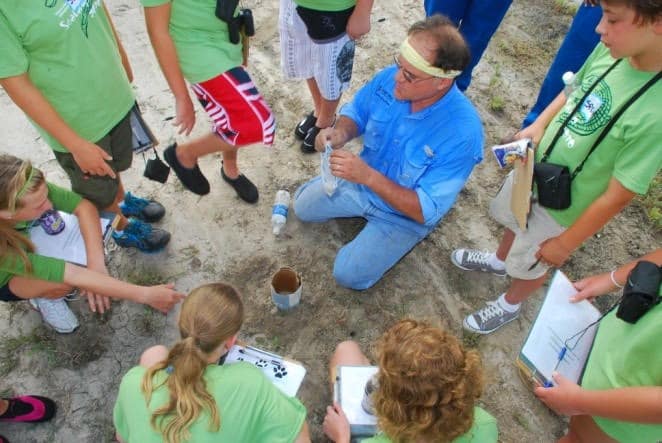
Camilla: What are some of the greatest challenges to carnivore conservation in your home state of Texas?
Scott: It has been an uphill battle to change ranchers’ minds concerning coyotes. Many have long held beliefs that are deeply ingrained—ideas passed down through generations. I remember one rancher in particular who I was able to change a bit of his bias against coyotes. He asked me how many coyotes lived in his area of western Texas. I told him that coyote density was about 1 coyote per 2 square miles. He said that was impossible because he saw 2 coyotes together that very morning. I explained to the rancher that the term ‘density’ refers to the number of animals per unit area, and although it may imply an even distribution across a landscape, coyotes do not necessarily have to be evenly distributed. They could be clumped, meaning that several could be together, so if 2 coyotes were together in a 2 mi2 area, then the next 2 mi2 area may have no coyotes, so on average, there are 1 coyote/2mi2. At that time, the rancher didn’t seem convinced. However, I met him a month later by a windmill providing water for his cattle and there were about 50 cattle around the pond. I said to the rancher that I had no idea his stocking rate of cattle on his ranch was so high. He said it wasn’t, that his stocking rate was 1 animal unit per 15 acres, which was typical for the area. I said that couldn’t be because there were ~50 cattle around the pond, which was about an acre of property, so his stocking rate must be 50 animals/acre. The rancher gave me a sly smile—and in that moment, I knew he finally understood what I told him on our previous visit. Sometimes progress with ranchers occurs, even if it is baby steps.
Camilla: Are there recent positive wildlife conservation successes or efforts underway in Texas that you are involved in that you’d like to share?
Scott: Some of my current conservation initiatives in Texas have shifted toward reptiles, rather than coyotes. I’ve been conducting research on two species of reptiles, Texas horned lizard and Tamaulipan spot-tailed earless lizard, which are currently under consideration for federal Endangered Species Act “threatened” status. Unfortunately, I fear under the current administration that neither species will be granted federal status, despite clear signs both species are not surviving well on their own.
The Texas horned lizard historically was found in nine southwestern states but now has been extirpated in three of those states. Within the remaining states, its populations have been steadily declining. The Tamaulipan spot-tailed earless lizard was once found throughout much of southern Texas, from north of Corpus Christi to San Antonio to the Big Bend region. Today, only three small, isolated populations are known, the largest of which is ~1,000 acres. To me it makes sense to afford protection for both species. However, as said, our current administration believes that because technology is attempting to restore wooly mammoths and dire wolves from extinction, then the Endangered Species Act should become ‘extinct.’ Therefore, my hope for success on these fronts is dwindling.
Camilla: Are there any areas of research that you feel are needed to increase our understanding and acceptance of coyotes in both rural and urban areas?
Scott: I believe longer-term studies are needed to properly understand coyote biology and ecology. Short-term research often suggests one outcome, but a different concept comes to light if investigated longer. For example, many coyote removal studies that are performed to improve white-tailed deer fawn production state that killing coyotes in the area resulted in greater fawn survival. However, Dr. Sam Beasom, who conducted similar research in southern Texas, also found that fawn survival initially increased with coyote removal. However, his study continued through the year and did not end with spring production. His study found that in areas with predator control, initial fawn production increased, but those fawns died from various other factors thereafter. Whereas, fawns produced in areas with no coyote removal had higher predation rates, but better survival of fawns throughout the remainder of the year. The end result was that by the time of deer hunting season, deer recruitment in areas with and without coyote removal was the same. Thus, spring/summer predator control did NOT improve fawn recruitment. This was only learned through long-term monitoring.
Another example comes from my own research. Early studies suggested that coyote removal will result in coyotes responding by having larger litters (i.e., switch from producing 4 pups/litter to up to 12 pups/litter). I conducted a longer-term study and found that only young coyote females respond by having larger litters, and that older females continue to produce litters of ~4 pups/litter. However, younger females tend to have greater hookworm parasite loads than older females. Hookworms are passed from mother to young pups transplacentally and transmammary, which results in the pups having a much higher mortality rate. Thus, odler females have, on average, 4 pups, of which ~3 survive to the first month of age. Younger females have ~8 pups, of which ~3 survive to the first month of age. Therefore, longer-term studies show that some coyotes may respond with greater litter sizes if coyote density is reduced, but the number that actually survive doesn’t change much.
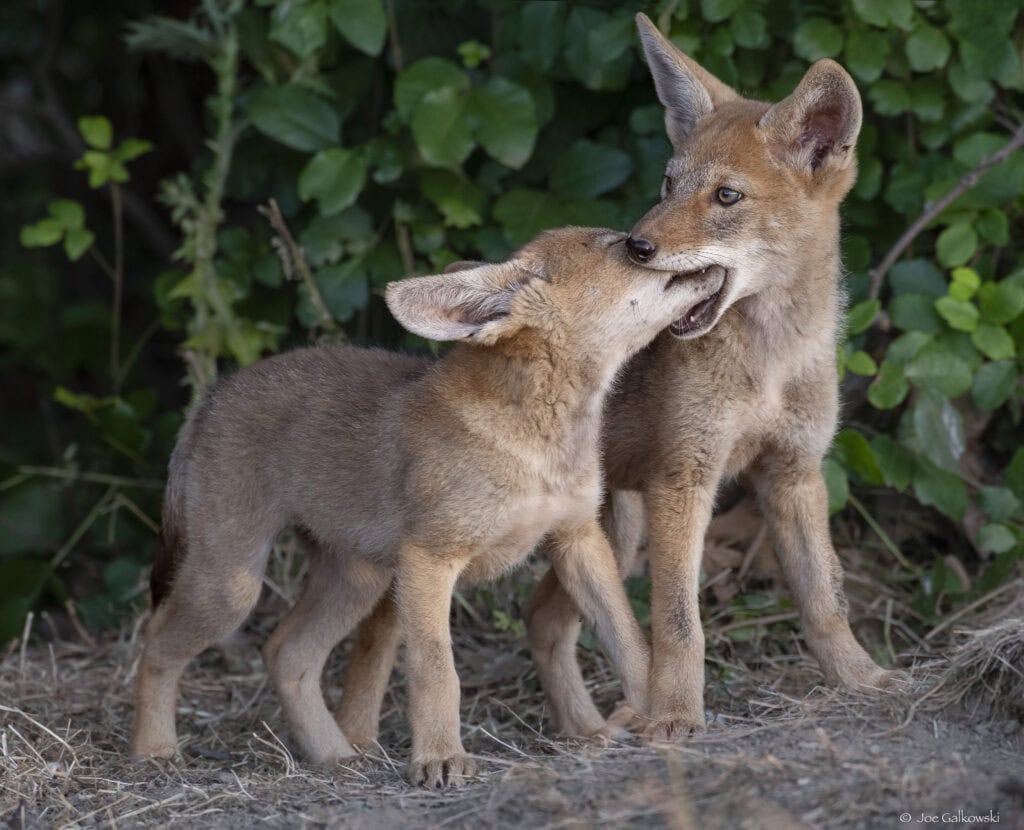
Camilla: What advice would you have for an organization like Project Coyote that has just expanded our presence in Texas, where misplaced fear and misunderstanding of coyote behavior and their ecological role often drive anti-predator attitudes and policies?
Scott: I would say your best argument to change Texans’ minds about the need for coyote control is the economic argument. It may prove to be an uphill fight to argue the ecosystem benefits for biodiversity, but when it’s all said and done, the economic bottom line drives decision-making. Conducting coyote control costs more than the financial gain. From my studies, the best-case scenario was a break-even one. Therefore, the odds appear to be against the rancher financially to conduct coyote control. Once this concept is understood, then I believe ranchers will come around and change ways.
Part of the solution is teaching ranchers to know their true enemies. Don’t kill coyotes just because they are present. If a rancher isn’t experiencing true coyote-killed losses, then don’t go after every coyote they see. As stated before, a territorial, but non-predating coyote can be an asset to ranchers by defending a territory against other coyotes that could move into the area, which in turn, could create livestock issues for the rancher. There are other predators of calves that can be a greater problem. For example, black vultures are known to peck at the eyes of calves to blind them. Blind calves eventually succumb and die, which allows vultures to feed. Sometimes, a scavenging coyote comes across carcasses; however, just because a coyote is at a carcass does not mean it necessarily killed the animal. Once the ranching community becomes more familiar with these dynamics, I believe perceptions of coyotes will begin to shift.
